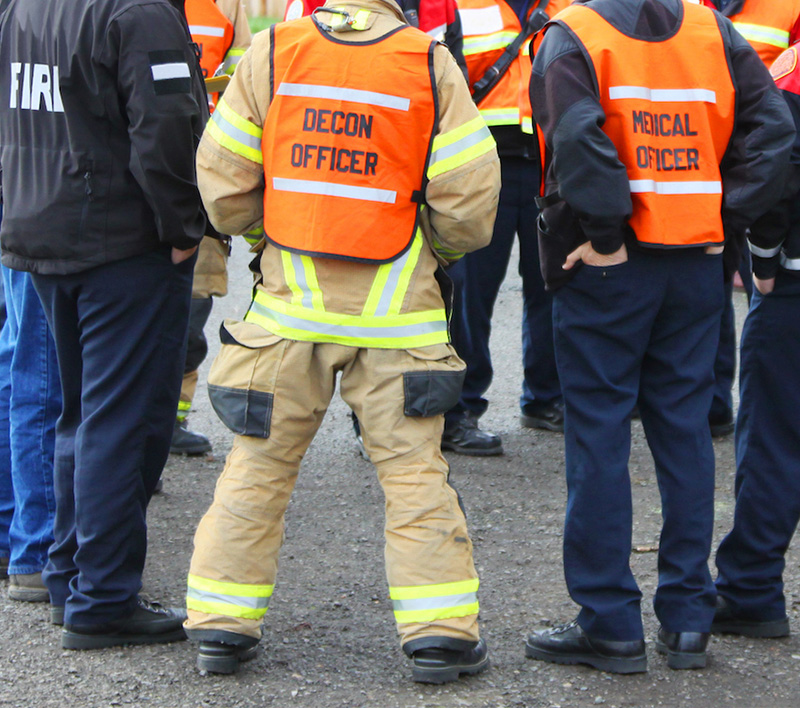In the wake of recent catastrophic events such as Superstorm Sandy (233 deaths, $75 billion in damages), the 2011 Joplin tornado (158 deaths, $2.8 billion in damages), and Hurricane Katrina (1,245 deaths, $108 billion in damages), emergency management experts are increasingly evaluating the benefits of sheltering in place as opposed to evacuation. According to the Federal Emergency Management Agency (FEMA), sheltering in place is generally advisable when it may be dangerous to leave your home or place of employment.
“Shelter in place is a concept that has been out there nationally among the emergency management community to reduce the number of fatalities and injuries that occur when people are in transit during high-wind events and other disasters,” says Simpson Strong-Tie senior product manager Tom McClain. “People fleeing typically jump in the car, which is not a safe place to be, and can often end up at a shelter that is already full or not operational.”

Although individuals should always follow the direction of local law enforcement and emergency management officials regarding evacuation orders, sheltering in place often offers the fastest and safest option for riding out a storm. While structures located in a flood zone are not recommended as shelters during flood events, sheltering in place is otherwise a first defense to natural disasters, provided structures are well-built or have been reinforced using a continuous load path and other disaster-resilient construction methods. In addition to providing a more secure shelter from danger, these kinds of building techniques can also help minimize expensive storm and wind damage.
“Most of the building codes have been written to avoid catastrophic loss of life, but some researchers are exploring and promoting the concept of not just surviving a disaster but also being able to use the structure afterward,” McClain says. “You’ll see that often within the context of seismic design, and here the idea is similar — survive a storm, and still have a house you can live in.”
A continuous load path is particularly effective during extreme weather events, because it transfers load from the roof down to the foundation, enabling the structure to withstand the higher wind speeds common in tornadoes and hurricanes. Proper structural framing does the lion’s share of load transfer, but connectors are critical in making sure all parts of the house, including the roof, walls, floors, and foundation, are intact as a single interconnected system.
Even with weaker structures that may be difficult to retrofit into complete code compliance, it’s often possible, using national standards such as the ICC-500, to strengthen one section of the building enough for it to function as a “storm shelter” designed to resist either hurricanes or tornadoes, depending on which is the greater risk where you live.
Obviously, a home is more likely to withstand a seismic or high-wind event (and provide an optimized shelter in place) when all of its parts are connected together. “That’s where Simpson Strong-Tie comes into play,” says McClain. “Have your roof secured and your walls anchored down before a tornado or hurricane blows through. Will it guarantee your survival? No. But does it increase your odds? Absolutely.”
In addition to making structures more storm resilient via continuous load path construction, home and business owners should also take into consideration the type of disaster that would be most likely to occur in their region, and plan accordingly. While a tornado may force you to shelter in place for only a few hours, an intense hurricane could mean hunkering down for several days. FEMA recommends preparing a disaster recovery kit that assumes sheltering in place for up to 72 hours, or three full days.
So what lessons can we draw? Disasters can’t be stopped or controlled, but we can plan our response to them. Sheltering in place should be part of our emergency planning. The other part, as we’ve learned, is knowing we have a shelter that is structurally sound enough to withstand foreseeable disasters for as long as we may need it to. Building or retrofitting to include a continuous load path, with strong connections between all its structural components, helps with that part. Everything else being equal, having a resilient place to shelter is the best way to ensure a safe outcome for ourselves and the things we care about.


